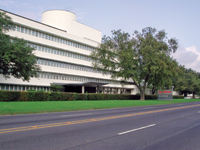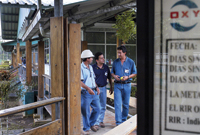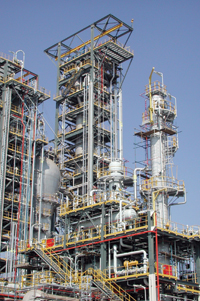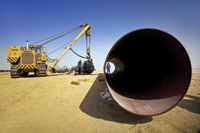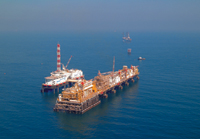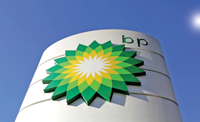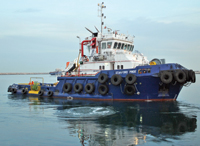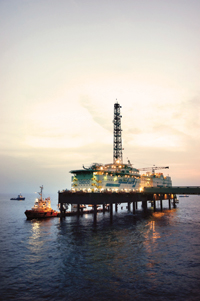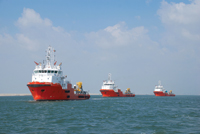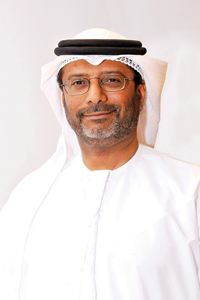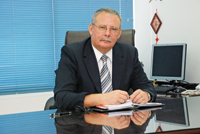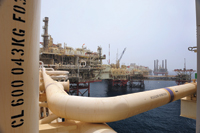
 Adnoc ... trying to get maximum from its fields
Adnoc ... trying to get maximum from its fields
ABU DHABI is planning to spend more than $70 billion on its oil, gas and petrochemical sector over the next decade, which includes plans to boost total oil production capacity to 3.5 million barrels per day (mbpd) by 2017, and increase gas production from 6 billion cubic feet per day (bcfd) to 7.5 bcfd over that same period.
To make this a success the emirate is asking companies to take a stake in the individual fields alongside national oil company Abu Dhabi National Oil Company (Adnoc).
Adnoc had invited over 10 international oil companies to prequalify in early 2012 for a bidding round for the emirate’s onshore oilfields, which produce over 1.4 mbpd of oil.
Abu Dhabi Company for Onshore Oil Operations (Adco), a subsidiary of Adnoc, currently operates the fields with 60 per cent, while Shell, Total, BP, and ExxonMobil each hold 9.5 per cent, and Portugal’s Partex has 2 per cent.
Currently, the UAE is seeking to increase its oil production capacity to 3 mbpd this year from a current output capacity of around 2.8 mbpd of crude, according to statements made by the country’s oil minister Mohammed bin Dhaen Al Hamli.
In December, the UAE reached a production level of 2.6 mbpd of oil, indicating that the country will seek to ramp up production by 400,000 bpd of crude in the months ahead, according to Hamli. The bulk of the UAE’s oil is successfully pumped via the new $3-billion Habshan to Fujairah pipeline, which has a throughput capacity of between 1.5 and 1.8 mbpd of crude.
This pipeline made the UAE less vulnerable on its maritime oil export route via the politically sensitive Strait of Hormuz, which Iran has repeatedly threatened to shut down in case of a military attack by Israel against Iran’s nuclear installations.
Hamli has not provided details as to why the UAE has not managed to reach this level in 2012, as was officially planned. Nevertheless, the UAE’s energy policy is set to pursue a more diverse supply mix over the years to come.
In addition to the development of challenging new oil and gas fields, the UAE’s first nuclear power project at Al Baraka on the Arabian Gulf in the west of Abu Dhabi is currently also under development.
As has become a common feature across Gulf Cooperation Council (GCC) countries, the UAE also seeks to produce more oil for export rather than using it for domestic energy needs. For this, however, the UAE needs to develop more non-associated and sour gas, which is difficult to access and presents significant health and safety risks.
 |
|
Hamli ... pursuing a policy of diverse |
Adnoc is working with US company Occidental Petroleum at the Shah gas field and with Germany’s Wintershall and Austria’s OMV at the Shuwaihat gas and condensate field to develop sour gas fields in an effort to produce more gas domestically and avoid becoming a net gas importer.
Abu Dhabi, however, has delayed parts of its 253,000 bpd onshore capacity expansion programme until the middle of 2013, some six months behind schedule, top Abu Dhabi officials say.
The emirate will bring 133,000 bpd on by the end of this year, as originally planned, according to statements made by the officials to the UAE state news agency Wam.
Adco, which operates all producing onshore fields, has already started up a 40,000 bpd expansion at the giant Bab field. By the end of the year it will add 40,000 bpd more at Bab, 45,000 bpd at Sahil and a small increase at Rumaitha. Early production is expected at Asab as well, the officials say, but not did give a figure.
But some 50,000 bpd of new output at the Shah and Qusahwira fields will only come on by March, say the officials. The remaining 70,000 bpd from Asab and the greenfield Bida Al Qemzan will fully be ready even later – in June and July, respectively, they added. The projects were due by end-2012.
The 253,000 bpd slate of projects will boost Abu Dhabi’s onshore production capacity from just under 1.4 mbpd to 1.6 mbpd. Overall the country’s capacity, including output from the other emirates, is 2.6 mbpd, Hamli says.
Abu Dhabi’s next major onshore increase will occur in 2014 with a further expansion of Bab. The Rumaitha and Dhabiya fields, located in the Northeast Bab region, will add 112,000 bpd to reach 230,000 bpd by 2017, the officials say. Onshore production capacity will reach 1.85 mbpd by then.
The onshore projects faced multiple delays as Adco has been reluctant to invest in high-cost developments in smaller and remote fields, particularly as the international Adco partners complain that the fixed $1 per barrel fee does not provide them with sufficient returns on their capital investments. When contracting prices fell after the financial crisis in 2008, Adco jumped at the opportunity to sign billions in contracts in 2009 and 2010.
Adnoc officials say the $10 billion Shah sour gas project was on track to produce 1.04 bcfd by “late 2014.” The Al Hosn joint venture, which is the operator of the development, has completed 64 per cent of the work on the plants and pipes and 25 per cent of the drilling. Al Hosn plans 32 wells for the first phase. The officials say that they would consider a second-phase development after evaluating the results of the first phase. Al Hosn is owned 40 per cent by US Occidental and 60 per cent by Adnoc.
 |
|
Abu Dhabi’s IGD project is due for completion |
Meanwhile, Abu Dhabi’s tough commercial terms for its current concession holders have forced state Adnoc to advance several new large offshore projects on its own with the eventual plan of tendering some of them.
Adnoc has taken 100 per cent interest in the Saath Al Ras Boot (Sarb) field, formerly held by the Abu Dhabi Marine Operating Company (Adma-Opco) consortium, and will be investing to boost production to 100,000 bpd by 2017-18, Adnoc officials say. Drilling is planned to start in 2013.
Adma-Opco, owned 40 per cent by BP, Total and Jodco and the rest by Adnoc, has relinquished Sarb, Adnoc says. Adnoc has asked Adma to carry out the development, meaning that Adma will do the work, but it will not invest the capital, nor will it get a share of the production, Adnoc officials say.
Adnoc intends on keeping the field as its sole risk for now, with Adma as the operator, although there is a possibility of bringing in an international oil company (IOC) later, one senior official says.
Under the terms of the Adma concession, there are certain requirements to tap undeveloped fields in a timely manner. Adma has been reluctant to invest the billions in greenfield development programs in challenging fields, first because the fixed $1 per barrel makes it unattractive to deploy capital, and second, the concession expires in 2018 making it more difficult to recover costs with few years remaining. It has preferred to spend on big producers like Zakum and Umm Shaif, which pump together 600,000 bpd. Adma is keeping its stake in two greenfield projects at Umm Lulu and Nasr to bring production to 105,000 bpd and 65,000 bpd respectively by 2019.
Those projects will cost some $7.5 billion, with the IOCs responsible for $3 billion. The IOCs calculate their rate of return is below 2 per cent on that capital invested – far below what is acceptable, they say.
Adnoc has also taken over the Ghasha field from Adma. The huge offshore structure has a similar surface area to the Zakum field, but it is very complex. “It could be called critical fluid – you don’t know if it is gas or oil or condensate,” says an official. Plus it is located in environmentally sensitive waters.
Although Adnoc has Adma doing the early work, this field will “likely” be tendered in the future, said the official. The production range could be around 100,000 bpd, but no definite plans are yet in place, the official adds.
Other fields relinquished by Adma have already been tipped for a new operator. South Korea’s KNOC and GS Energy inked a deal last year to take over three areas in Abu Dhabi, including one offshore zone that includes former Adma field Mandous.
Adnoc says that new joint venture, 34 per cent by KNOC, 6 per cent by Korea’s GS Energy and 60 per cent by Adnoc, has not yet been finalised, so development plans are not complete.
A number of other fields have been relinquished – or soon will be – by Adma: Bu Hasser, Hair Dalma, Yaser, Bin Nasher, Bu Jufair, Umm Salsal, Bel Bazem and Umm Dhoulou. Many of these are candidates to be tendered, officials say.
Abu Dhabi wants to exploit its oil reservoirs to levels far beyond current recovery rates, an ambition that analysts say would give experienced western oil companies an edge over Asian newcomers in the run-up to concession renewals.
“The intention is to improve the recovery factor in Abu Dhabi to 70 per cent. This is our ultimate target,” says Ali Al Jarwan, the chief executive of Adma-Opco.
The global average recovery rate lies at about 35 per cent, according to the Norwegian company Statoil.
Boosting the recovery levels of Abu Dhabi’s depleting oilfields is a technical challenge that may exceed the capability of some of the companies vying for a stake in Abu Dhabi’s oil sector.
“That is a very ambitious level,” says Bill Farren-Price, the chief executive of Petroleum Policy Intelligence. “If they want to achieve that they would need to bring in some of the largest international oil companies, because it’s going to involve the application of the leading enhanced oil recovery equipment.”
He adds that some of the less experienced companies, such as some of the national oil companies from Asia, may be ruled out.
Adnoc is preparing to renew its Adco onshore concession, which produces the bulk of the emirate’s oil on land. The concession is up for renewal in 2014, and international oil companies are positioning themselves as viable future participants.
A preliminary list of companies eligible for the new concession includes the above stakeholders, minus BP and Partex, as well as Korea National Oil Corporation (KNOC) and China National Petroleum Corporation (CNPC).
Due to a growing thirst for oil in their home countries, the Asian national oil companies (NOCs) are playing an increasingly active role in the region. Abu Dhabi and South Korea this year signed an agreement allowing KNOC to explore vast swaths of the emirate for new sources of oil, and China is in similar negotiations for CNPC.
But question marks remain over their technical ability to produce at depleting fields.
Some of the current Adco concession partners are already working hard to demonstrate their technical competence.
Exxon is a partner in the Upper Zakum Development Company (Zadco), the joint venture exploiting the giant offshore Upper Zakum oilfield.
Zadco is the first Adnoc subsidiary to officially target a 70 per cent recovery rate.
France’s Total has achieved recovery rates of above 50 per cent at the Abu Al Bukhoosh field, according to Gonzalo Dieste, a petroleum technologies adviser at the company.
Enhanced oil recovery – the methods used to boost recovery rates – has traditionally relied heavily on replacing the crude in reservoirs with natural gas. As Abu Dhabi is facing a shortage of gas, Adnoc is exploring other options, and has already tested the use of carbon dioxide (CO2) at its onshore oilfields.
Adma-Opco is also exploring the use of CO2 to increase recovery rates, says Al Jarwan.
“There is research at Adma in how to do CO2 injection offshore. It is a feasibility study, it will develop later on into a pilot and then [go] full scale – but this is really long term,” he says.
The concession operated by Adma-Opco – a joint venture by Adnoc, the UK’s BP, France’s Total and Japan’s Jodco – will be relicensed in 2018.
Abu Dhabi’s $11 billion Integrated Gas Development (IGD) project, which seeks to boost the oil-rich emirate’s much-needed domestic sales gas, is on target for completion by the end of 2013 or early 2014, industry sources say. The project aims to send as much as 1 billion cubic feet per day of gas from the offshore Umm Al Shaif oil field to the onshore domestic grid.
“A small piece is already working and some gas is flowing from offshore to onshore,” says one industry source. The IGD project is currently producing around 200 million cubic feet per day (mmcfd) and is targeting 800 mmcfd, with a total capacity to produce as much as 1 bcfd, the source adds.
“The bigger volume will come in a year and half,” the source said, adding that the project could be completed by the end of next year or it could slip into 2014.
Abu Dhabi currently processes some 6 bcfd of gas, much of which is reinjected to support the emirate’s oil production (related). After reinjecting gas into the oil fields, around 1.8 bcfd is left for the national grid, the industry source says.



















































































